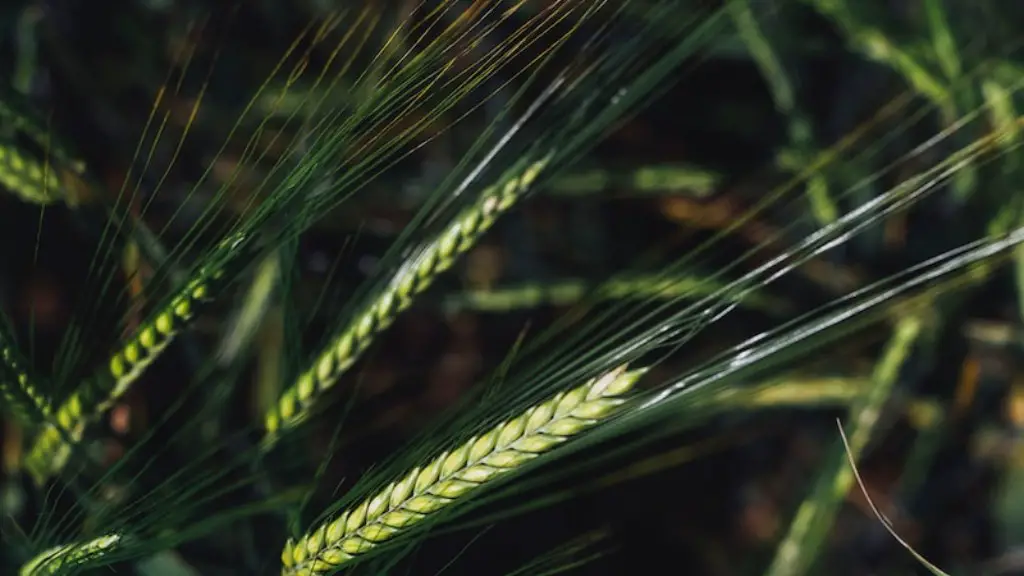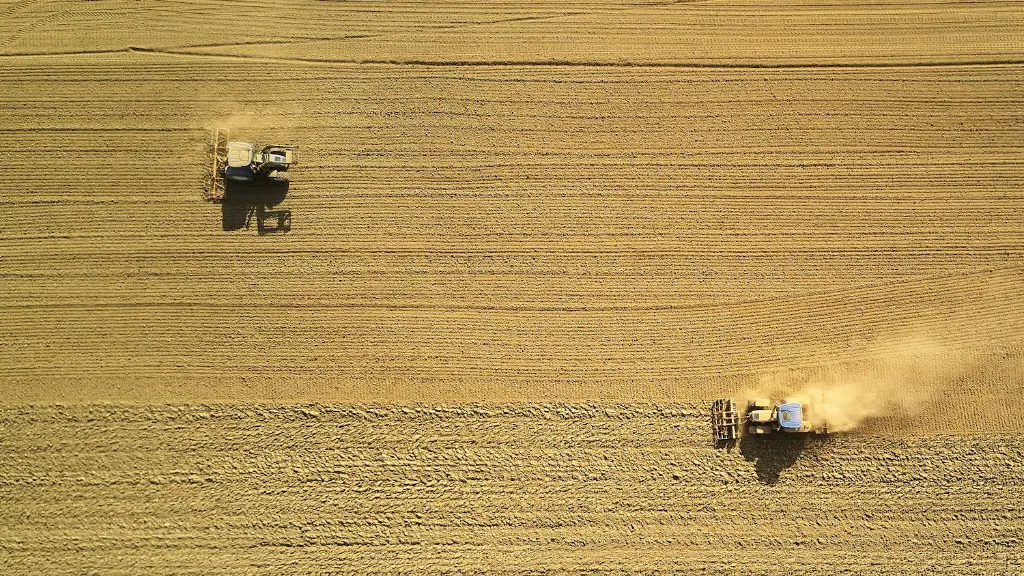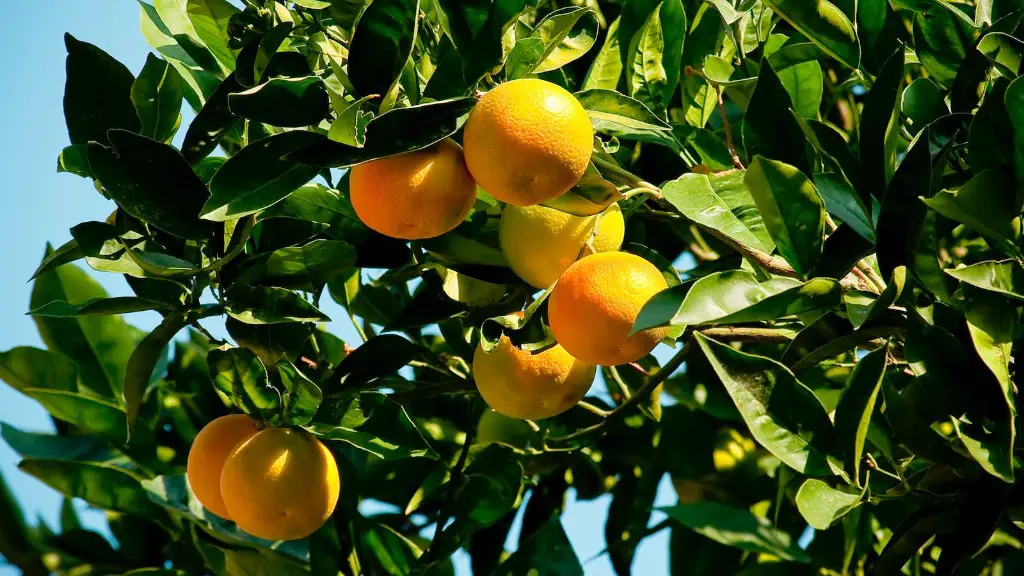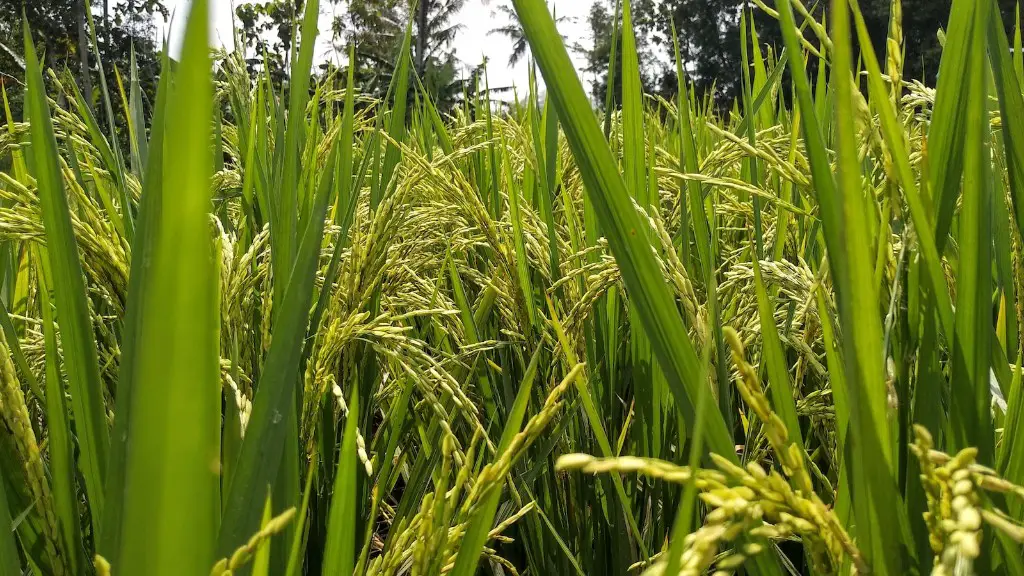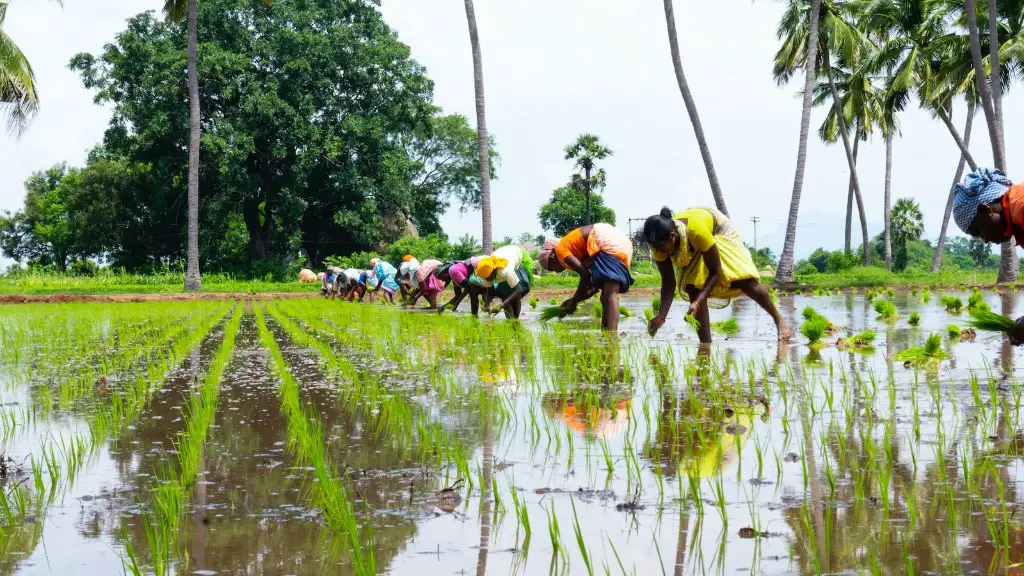Agriculture mechanisation is a process by which machinery is used to perform the various activities associated with farming. This mechanisation process has greatly improved agricultural efficiency since its introduction in the early 20th century. Mechanisation has enabled farmers to perform their tasks with minimal labour input and increased productivity. Mechanisation has also proven to be cost effective in terms of reducing labour costs and has allowed for increased crop rotation and livestock management. In addition, mechanisation has brought about unprecedented advancements in farming technology.
The introduction of machinery into the farming industry has had a major effect on the way crops are grown and harvested. Mechanised tractors, harvesters, cultivators and other machines have made it possible to grow large quantities of food in a shorter period of time. This has resulted in a dramatic increase in food production, which has helped to feed the world’s growing population and reduce global hunger.
Mechanisation has also resulted in a shift in the use of labour on farms. As mechanisation has increased, farmers have been able to specialize in specific aspects of farm production and have reduced the need for traditional farm labour. This has resulted in more highly skilled agricultural workers and has enabled farmers to focus on more efficient methods of production. Moreover, mechanisation has enabled farmers to reduce the amount of time spent in the field as certain tasks are now automated.
The mechanisation of farming has also led to a greater understanding of how crops grow and how to best manage them for maximum output. The use of automated vehicles, such as combine harvesters, has enabled farmers to collect large amounts of data regarding crop growth and development. This data can then be used to inform the agricultural practices on an individual farm or on a larger scale.
Overall, the use of mechanisation in agriculture has created a more efficient and productive farming industry. It has enabled farmers to produce more food while also reducing labour costs and using less land. Mechanisation has also created new opportunities for farmers as they are able to specialize in specific aspects of farm production.
Advantages of Agriculture Mechanisation
Mechanisation of agriculture brings several advantages for the farmers. First, mechanisation of farm operations has led to increased efficiency in production. Farmers are able to rotate crops more quickly and harvest them faster. Additionally, mechanisation has made livestock management simpler, as certain tasks such as feeding, milking, and shearing can now be performed more quickly and safely.
Mechanisation also offers savings on labor costs. Machines such as combine harvesters and tractors are able to replace many of the manual labor tasks that had to be performed by farmers in the past. This has allowed farmers to save money and invest in other aspects of their businesses.
Finally, mechanisation has greater environmental benefits. By reducing the need for manual labor, farmers are able to reduce their carbon footprint and the amount of land they use. By mechanising processes, farmers are able to maintain high yields while caring for the environment.
Challenges of Agriculture Mechanisation
While mechanisation of agriculture has offered several advantages, it has also presented some challenges. The cost of machinery can be high, and farmers may not be able to afford the equipment needed to mechanise production. In addition, mechanisation can increase the complexity of certain farm tasks, as specialized knowledge may be required.
Heavy machinery can also cause physical damage to the soil. This can reduce the fertility and productivity of the land, leading to costs that the farmer may not be able to bear. Additionally, the use of machinery may lead to soil erosion, as the weight of the machinery breaks up the soil and allows wind and water to carry away particles.
Finally, the introduction of machines into the work environment can reduce job opportunities for certain people. On farms that are highly mechanised, there is no need for manual labor and many farming jobs that used to exist are now obsolete. This can contribute to rural poverty in areas where agricultural work was the main source of income.
Impact of Agriculture Mechanisation
Mechanisation of agriculture has had a massive impact on the way we grow and consume food. On the one hand, agricultural production has increased dramatically as farmers have been able to utilise machines to increase yields and save labor costs. This has enabled farmers to feed an ever-growing population, while also providing employment opportunities.
On the other hand, mechanisation has led to the displacement of certain groups of people, particularly in rural areas. Manual labor that was traditionally performed on farms has been replaced by machines, leading to increased unemployment and poverty. This issue has been compounded by the fact that those who do have access to the machines are often not as skilled in agriculture and may not be able to produce a good yield.
Finally, mechanisation of agriculture has presented both environmental benefits and drawbacks. While machines have enabled farmers to achieve high yields with minimal effort, the use of heavy machinery and the increase in chemicals used on crops can have a damaging effect on the environment.
Impact of Technology on Agriculture Mechanisation
Technology has had a major impact on agriculture mechanisation. The use of satellite technology, robotics and artificial intelligence (AI) have enabled farmers to more accurately track and manage their crops. Automation has made it possible to plan harvests, detect pests and diseases, and optimise irrigations systems.
In addition, sensors have been developed to monitor soil and irrigation systems, enabling farmers to take immediate action in the case of any issues. AI systems can also be used to collect data on plants, allowing for more precise management of crops and improved yields.
The use of technology has also led to an increase in precision farming. This strategy utilises data from satellites and other sources to gain an in-depth understanding of the various variables that can affect crop growth. With this information, farmers can make more precise decisions and reduce the use of pesticides and other chemicals.
Finally, technology has made it easier for farmers to connect with other people and organisations. Online communities have enabled them to share information and tips, find new markets for their products, and increase their knowledge and expertise in the farming industry.
Concerns about Agriculture Mechanisation
While agriculture mechanisation has enabled farmers to increase yields and become more efficient in production, it has raised some ethical concerns. The introduction of certain machines, such as drones and automated tractors, may displace certain groups of people whose skills cannot be replicated by machines.
In addition, the use of robots and AI in precision farming has raised privacy concerns for some farmers. Automation has resulted in vast amounts of data being collected on farms and stored in databases, which some have argued may be used by companies to gain a competitive advantage in the market.
Finally, the use of machinery can have a detrimental effect on the environment. Heavy machinery can cause soil erosion and damage soil fertility, while the use of pesticides can contaminate water sources. In addition, the fuel used to power tractors and other machines can lead to air pollution.
Future of Agriculture Mechanisation
Agriculture mechanisation has the potential to continue revolutionising the way food is produced. Automation and robotics are likely to replace certain roles in the farming industry, such as harvesting and planting, in the coming years. In addition, the use of precision farming and AI systems is expected to become more common, as these technologies become more advanced.
The development of driverless tractors and other autonomous machines is also expected to play a major role in agriculture mechanisation. These machines are able to operate around the clock and can be used to perform certain tasks such as weeding, pruning and spraying. This could help reduce labor costs and improve the efficiency and accuracy of farming practices.
Finally, the use of virtual and augmented reality could offer further insights into farming techniques. Visualisation techniques could provide an in-depth understanding of crop growth and insect behaviour, enabling farmers to better plan and manage their production.
